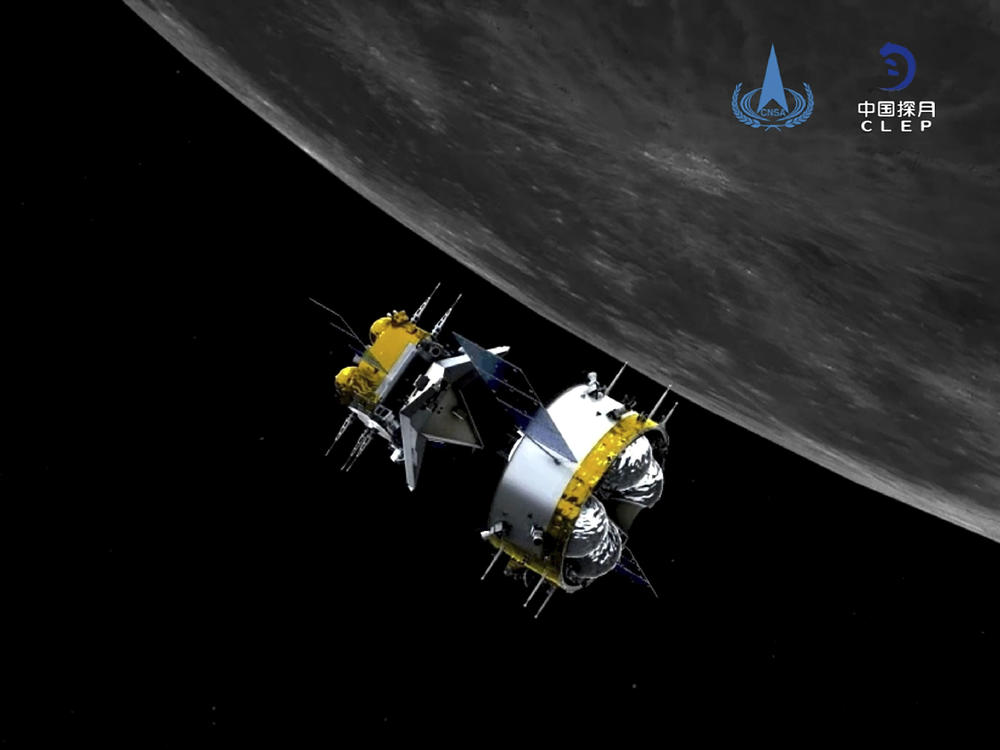Section Branding
Header Content
China Promises To Share Findings From Its Returned Lunar Probe
Primary Content
After 23 days and some 230,000 miles traveled, China's Chang'e-5 lunar capsule returned to Earth during Thursday's predawn hours. It carried cargo of more than four pounds of the first fresh samples of moon rocks and other debris in more than 40 years.
China's space agency said Thursday it intends to share its findings with the global scientific community.
The capsule for the Chang'e 5 probe landed in the Siziwang district of the Inner Mongolia region, the China National Space Administration reported. It first set off for the moon on Nov. 24.
The safe return of the lunar capsule wraps a groundbreaking mission for China's space exploration program. It made China just the third country to explore the moon's surface, after the U.S. and the former Soviet Union. It was also the first country to do so since 1976, when the the former Soviet Union's Luna 24 spacecraft returned from the moon.
The samples returned in this latest mission will provide the youngest Moon rocks and debris ever examined. Samples from the U.S. and the Soviet Union missions are more than three billion years old, scientists say.
The Chang'e-5 mission specifically aimed to collect samples less than two billion years old, according to National Geographic. This provides the global scientific community fresh insight into the history and other characteristics of the moon.
The mission zeroed in on landing in the Oceanus Procellarum, or Ocean of Storms, near a location called the Mons Rumker. This area was believed to be volcanic many years ago, and thus may have much younger rocks to pull from.
Xu Hongliang, spokesman for the China National Space Administration, said the nation is "very welcoming" of joint research, according to The China Daily.
Wu Yanhua, deputy director of China's space agency, said the soil samples collected with this mission will also be used for further research and museum exhibits.
What's next?
China is already set to launch three more lunar exploration missions and will pursue broader space exploration, The Global Times says.
The nation's Chang'e-6 and Chang'e-7 missions will further explore the moon and will collect more lunar samples for additional analysis. These missions may also allow for international payloads to be brought on board.
The Chang'e-8 mission will examine the capability of building an international lunar research station.
The Chinese government also has plans for three planetary missions that include a fly-by of Jupiter, and separate sample-return missions to an asteroid and Mars.
Copyright 2020 NPR. To see more, visit https://www.npr.org.

